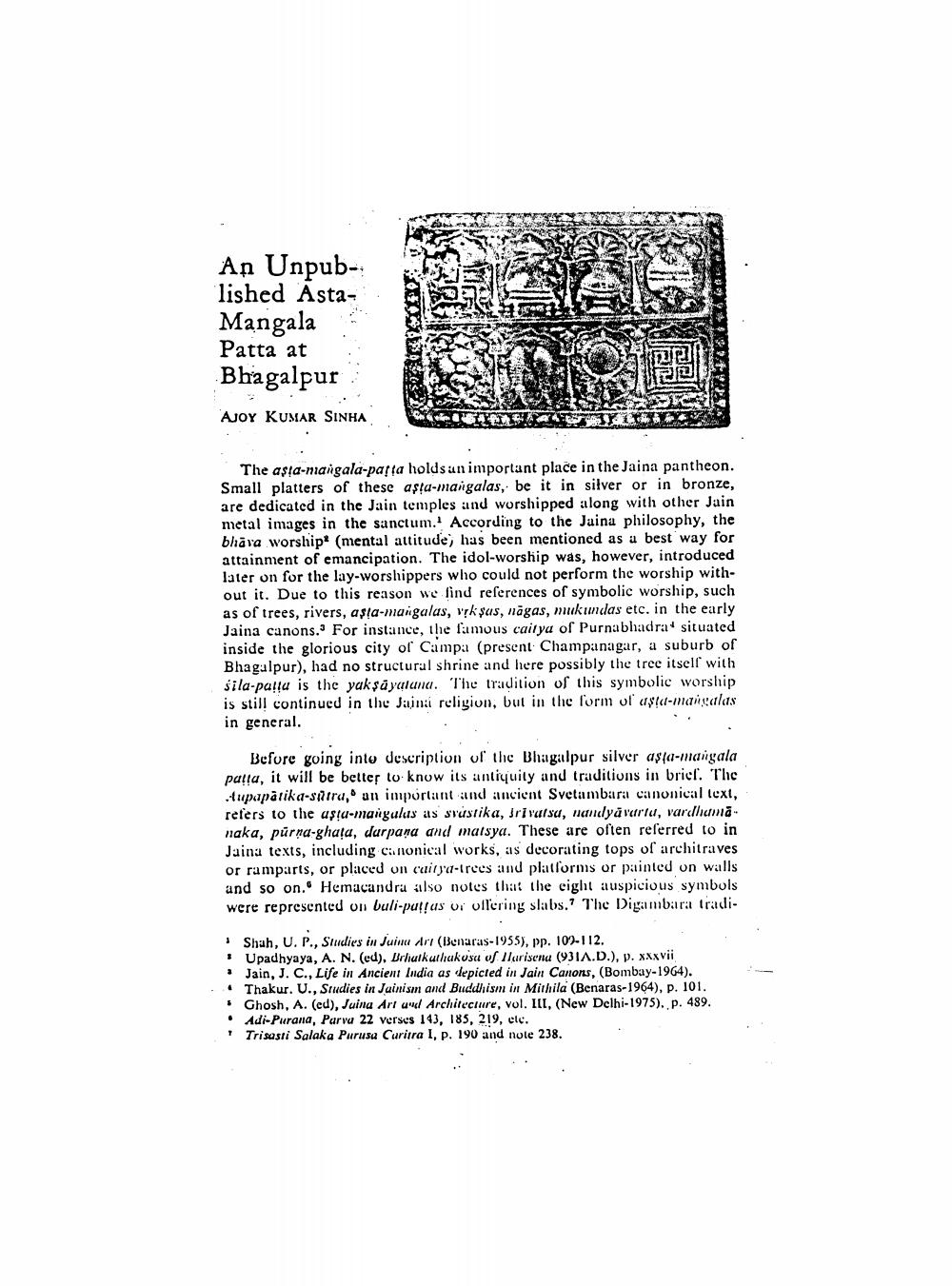________________
HR
An Unpublished AstaMangala Patta at Bhagalpur AJOY KUMAR SINHA
LATE.
RO
The asta-mangala-pasta holds an important place in the Jaina pantheon. Small platters of these asia-mangalas, be it in silver or in bronze, are dedicated in the Jain temples and worshipped along with other Jain metal images in the sanctum. According to the Jaina philosophy, the bhāra worship (mental attitude, has been mentioned as a best way for attainment of emancipation. The idol-worship was, however, introduced later on for the lay-worshippers who could not perform the worship without it. Due to this reason we find references of symbolic worship, such as of trees, rivers, asla-mangalas, Yksas, nagas, mukundas etc. in the early Jaina canons. For instance, the famous cair ya of Purnabhadra' situated inside the glorious city of Campa (present Champanagar, a suburb of Bhagalpur), had no structural shrine and here possibly the tree itself with sila-palsu is the yak sa yaluna. The tradition of this symbolic worship is still continued in the Jainsi religion, but in the form of asld-mangalas in general.
erdi.
Before going into description of the Bhagalpur silver asta-wangala palta, it will be better to know its antiquity and traditions in brict. The .tupapatika-sitra, an important and ancient Svetambara canonical text, refers to the ustu-mangulus as svastika, rivalsa, nandyavartu, vardhuma naka, pürna-ghala, darpana and matsya. These are often referred to in Jaina texts, including canonical works, as decorating tops of architraves or ramparts, or placed on cuita-trees and platforms or painted on walls and so on. Hemacandru also notes that the cight auspicious symbols were represented on buli-putus or Ollering slabs.The Digambara tradi
• Shah, U. P., Studies in Juin Ari (Benaras-1955), pp. 105-112.
Upadhyaya, A. N. (ed), Drhulkuthakusa of llurisenu (931A.D.), P. xxxvii
Jain, J. C., Life in Ancient India as depicted in Jain Canons, (Bombay-1964). • Thakur. U., Studies in Jainism and Buddhism in Mithila (Benaras-1964), p. 101.
Ghosh, A. (ed), Juina Art und Architecture, vol. III, (New Delhi-1975). p. 489. • Adi-Purana, Parva 22 verses 143, 185, 219, etc.
Trisasti Salaka Purusa Curitra I, p. 190 and note 238.




